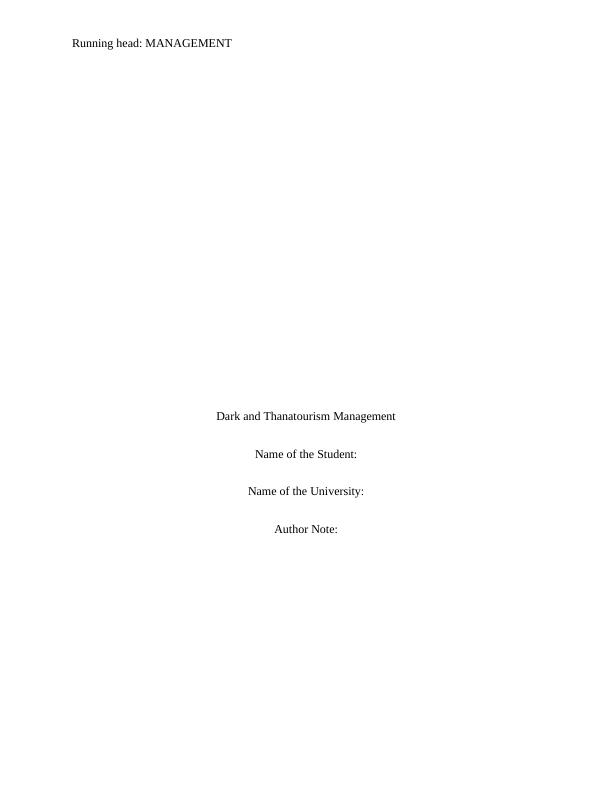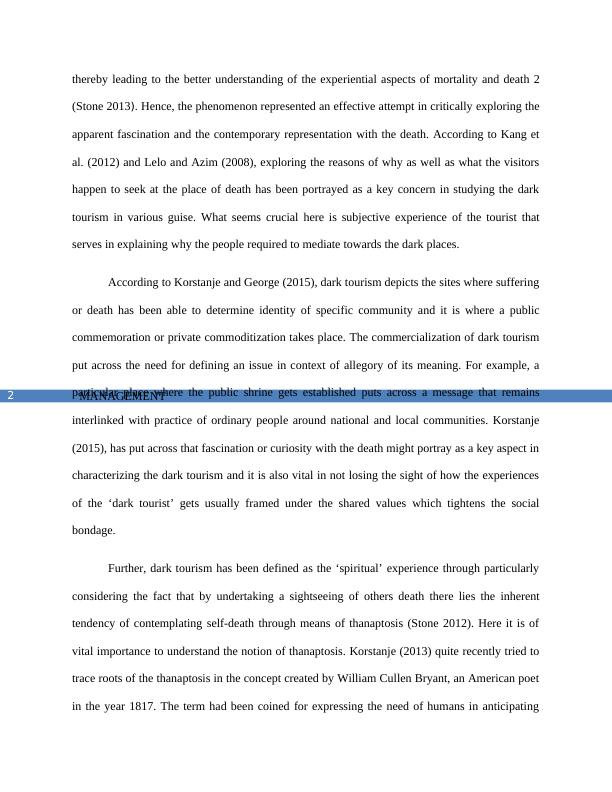Manipulating Dark and Thana Tourism
To what extent can authenticity within a dark tourism setting be manipulated for political ends? Use a range of examples to illustrate your answer.
10 Pages2844 Words10 Views
Added on 2022-08-18
About This Document
Korstanje (2012) and Lelo and Azim (2016), exploring the reasons of why as well as what the visitors happen to seek at the place of death has been portrayed as a key concern in studying the dark tourism in various contexts. According to Korstanje and George (2015), dark tourism depicts the sites where suffering or death has been able to determine the identity of specific community and it is where a public commemoration or private commoditization takes place.
Manipulating Dark and Thana Tourism
To what extent can authenticity within a dark tourism setting be manipulated for political ends? Use a range of examples to illustrate your answer.
Added on 2022-08-18
ShareRelated Documents
End of preview
Want to access all the pages? Upload your documents or become a member.
Dark Tourism Argumentative Essay 2022
|4
|700
|33
Pestle analysis of London Dungeons
|20
|8030
|32
Application of a Destination Planning & Development Toolkit
|10
|2597
|20
Strategic Business Impact: Dark Tourism at Warwick Castle
|12
|3675
|1
Contemporary Issues in Travel and Tourism Sector
|12
|760
|84
Managing Environment for Tourism and Events
|16
|3934
|500



